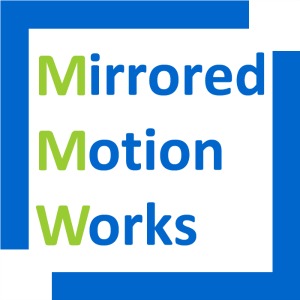Mirrored Motion Works exists because its founders have a personal commitment to helping stroke patients and their families achieve optimal success.
In 1980, Mirrored Motion Works founder Dr. Don Weisz’ family became acutely aware of the stress and heartache a stroke can bring to families when his mother suffered a major stroke at age 62. She lost all use of her left arm and left hand and required a wheelchair.
Then in 1988 Dr. Weisz’ father suffered a minor stroke. He recovered the ability to walk with some foot drop. However, despite therapy, he could not regain enough function in his left arm to continue to care for his wife.
The Promising Collaboration
In 2004, when Dr. Weisz was a research and clinical neurophysiologist and Associate Professor at the Mount Sinai School of Medicine (MSSM), he was introduced to Preeti Raghavan, MD, who had just accepted a faculty position there. They were at very different stages of their careers. Dr. Weisz had held faculty positions conducting neuroscience research at Yale University, University of Pittsburgh and MSSM since 1992. Dr. Raghavan, on the other hand, was beginning her career after completing medical school, residency and a NIH-funded fellowship in stroke recovery.
Dr. Weisz’ research experience over many years, including the design and construction of electronic circuits and mechanical devices, and Dr. Raghavan’s research focus on stroke recovery were a perfect match from the beginning.
Dr. Weisz immediately saw the opportunity to apply all of his training to address a major medical need that had so badly affected his family, and continues to affect approximately 800,000 other families in the United States every year. Both Drs. Raghavan and Weisz did not feel that traditional stroke therapy, especially for arm and hand function, were achieving the necessary degree of success that patients needed (and research bears out the finding). New ideas were needed.
A Novel Idea For Regaining Function
Very early on in their collaboration, they devised novel ideas for retraining arm function after stroke. Dr. Weisz then built a series of prototypes in his garage. Improvements ensued, based on extensive testing in Dr. Raghavan’s research laboratory.
After more than a decade of collaboration, their efforts led to the incorporation of Mirrored Motion Works.
To help fund the startup of the company, Dr. Weisz and his siblings sold the family farm that their parents bought in 1951. They could think of no better way of honoring the memories of their parents.

